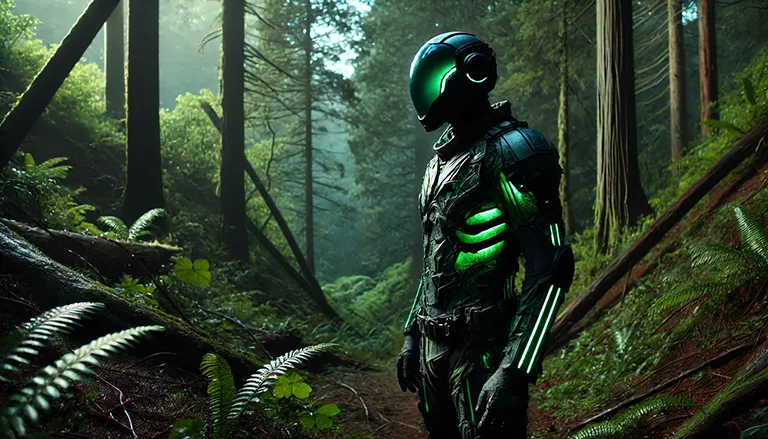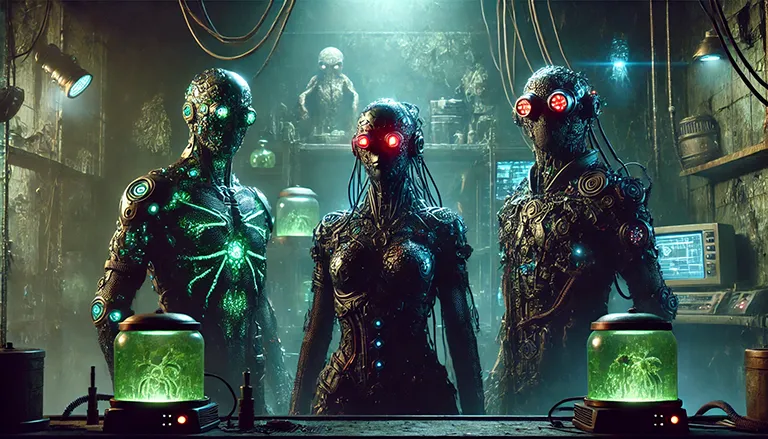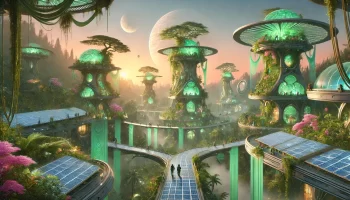Biopunk, a subgenre of science fiction, envisions a future where biotechnology has advanced to such a degree that the distinctions between human and machine, nature and artifice, become nearly indistinguishable.
Emerging from the cyberpunk genre, biopunk shifts the focus from cybernetics and information technology to the profound implications of genetic engineering and synthetic biology. It delves into the ethical, societal, and philosophical questions that arise when humanity gains the ability to reshape life at the most fundamental levels.
The Core of Biopunk: Ethical and Societal Implications
At its core, biopunk is a genre that scrutinizes the ethical dilemmas and societal disruptions brought about by radical biological advancements. The worlds it presents are often dystopian, where the misuse of biotechnology by powerful entities—be they corporations or governments—creates a stark divide between the empowered and the disenfranchised. These narratives serve as cautionary tales, illustrating how the potential benefits of biotechnology can be twisted into tools of oppression and control.
In biopunk worlds, genetic engineering isn’t just about curing diseases or improving crops. It can be used to create designer babies with pre-selected traits, enhance human abilities to superhuman levels, or even engineer entirely new life forms. These advancements, however, often come at a great cost, raising questions about identity, autonomy, and what it means to be human.
Key Themes and Elements in Biopunk Fiction
Biopunk fiction is rich with themes and elements that explore the darker side of biotechnology:
- Genetic Engineering and Synthetic Biology: The manipulation of DNA to create new organisms or modify existing ones is central to biopunk narratives. This includes everything from simple genetic modifications to the creation of entirely new species.
- Biohacking: Often portrayed as a form of underground resistance, biohacking involves the unauthorized or experimental use of biotechnology by individuals or small groups. These “biohackers” may modify their own bodies or create new organisms outside the bounds of law and ethics.
- Corporate Greed and Control: In biopunk worlds, powerful corporations often dominate the biotechnology industry, using it to maintain their wealth and power. These corporations may patent life itself, turning genes into commodities and treating living beings as products.
- Government Surveillance and Control: Governments in biopunk settings may use biotechnology for surveillance, population control, or the creation of super-soldiers. The blending of biology and technology enables new forms of control over citizens, raising questions about privacy, freedom, and autonomy.
- Ethical Dilemmas: The moral implications of genetic engineering, cloning, and other biotechnological advancements are central to biopunk stories. These narratives often force characters—and readers—to confront difficult questions about the nature of life, the limits of human ambition, and the consequences of playing God.
Transhumanism and the Blurring of Boundaries

One of the most intriguing aspects of biopunk is its exploration of transhumanism—the idea that humans can and should use technology to transcend their natural limitations. In many biopunk stories, the lines between human and machine, nature and artifice, are deliberately blurred. Characters may be cyborgs with enhanced abilities, or even entirely synthetic beings. These transformations raise questions about identity, consciousness, and what it means to be truly human.
Biopunk in Popular Culture
Biopunk has made its mark across various forms of media, offering a unique lens through which to view the future of biotechnology. Some notable examples include:
- Movies: Films like Blade Runner, Gattaca, and The Island explore biopunk themes, from genetic discrimination to the ethics of cloning.
- Video Games: The BioShock and Deus Ex series are well-known for their biopunk settings, where genetic modification and body augmentation are commonplace, often with dire consequences.
- Books: While not all explicitly biopunk, novels like Neuromancer by William Gibson and Never Let Me Go by Kazuo Ishiguro delve into the ethical and societal issues associated with biotechnology and genetic engineering.
The Dual Nature of Genetic Engineering: Cautionary and Visionary
While biopunk often presents a dystopian vision of the future, it also serves as a platform for exploring the potential benefits and risks of biotechnology. By examining the ethical implications of these advancements, biopunk helps us consider how biotechnology might shape our world in the years to come. It urges us to think critically about the power we wield over life itself and the responsibilities that come with it.



